Antique Hand-Painted Porcelain Pitcher – "EST 1820" Mark, Victorian Floral & Gilt, c. 1900 🏺🌸✨
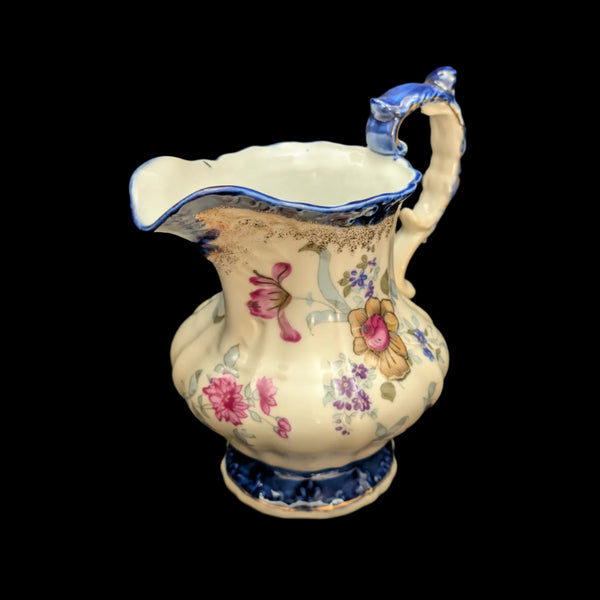
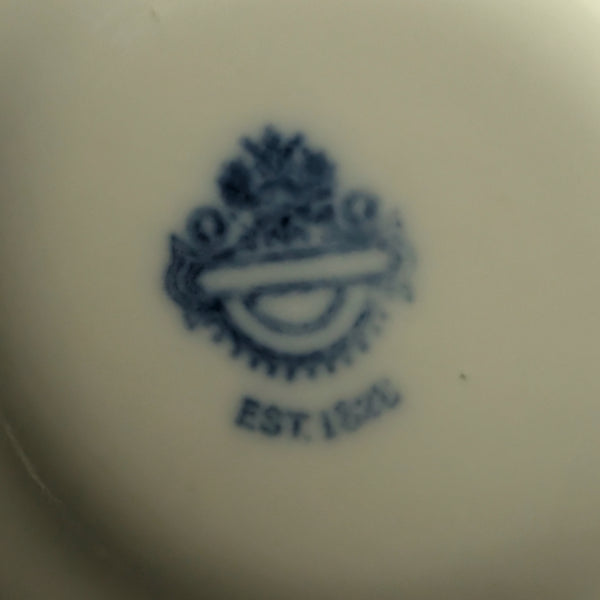
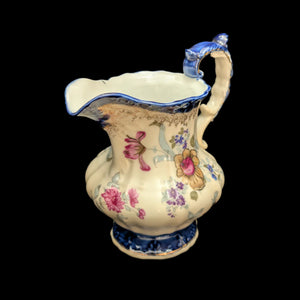
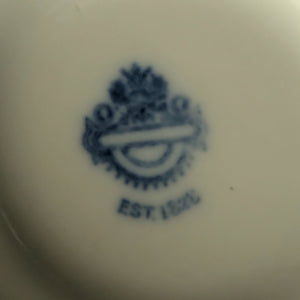
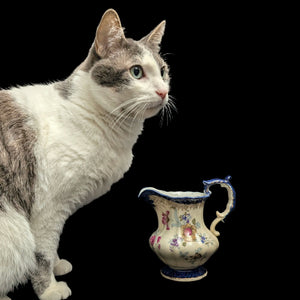
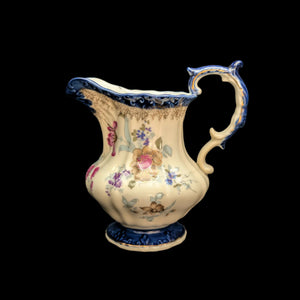
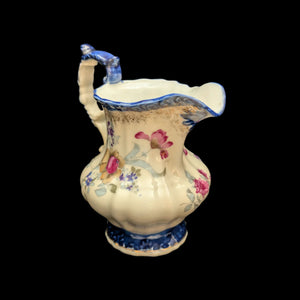
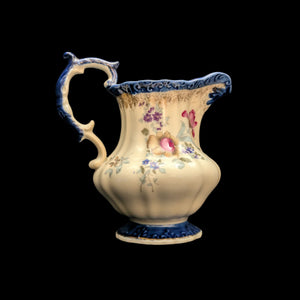
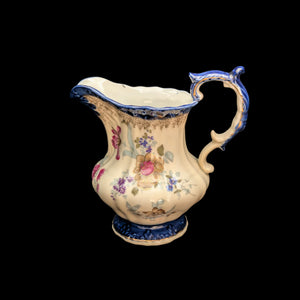
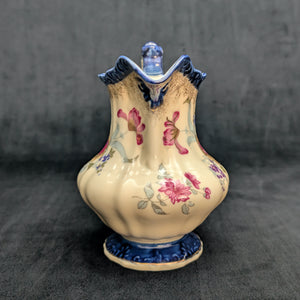
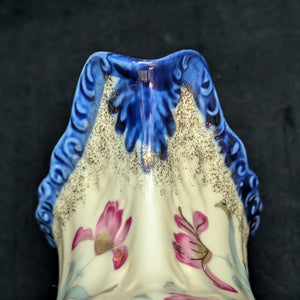
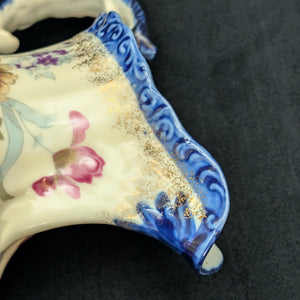
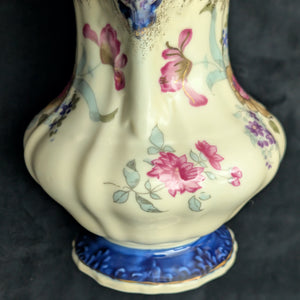
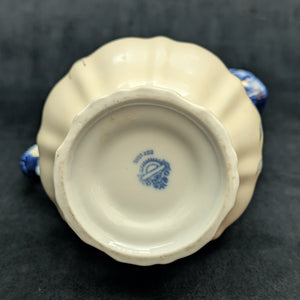
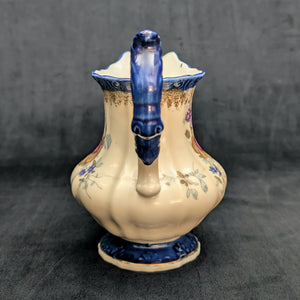
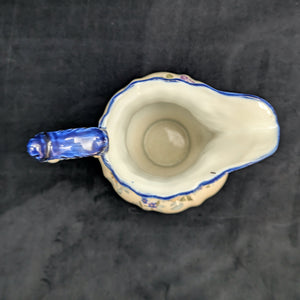
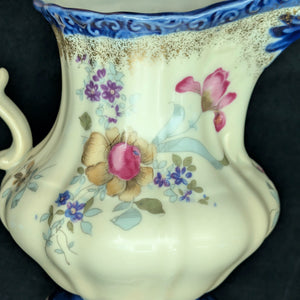
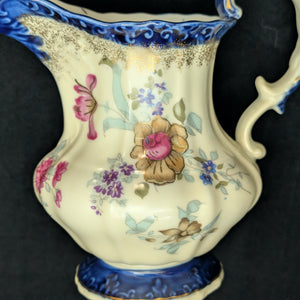
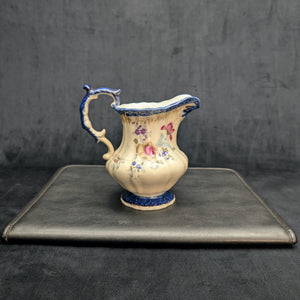
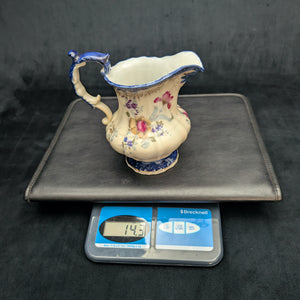
This is a cherished piece of porcelain history, a beautiful artifact from a celebrated European legacy. Its delicate floral motifs, rendered in soft hues of pink, yellow, and purple, are brought to life against the pristine porcelain.
The graceful form is complemented by intricate blue and gold accents, and the base is marked with a clear stamp reading "EST 1820". This is a strong antique acquisition that offers a documented link to a historic European manufacturer.
2. About the Pitcher 📖✍️✨
This beautiful pitcher is a versatile and cherished piece. It is perfect for serving cream or milk, or for displaying as a decorative accent.
The pitcher's form features a scalloped, bulbous body that rests on a small pedestal base, a silhouette typical of late Victorian tableware. The upper rim and handle are richly sculpted with a dark cobalt blue relief. The decorative field features delicate hand-painted roses and small blooms, set against a pale ground accented with gold splatter or specks.
3. About the Maker: The "EST 1820" Legacy ✍️🏛️
The mark on the base of this piece, with the words "EST 1820" within a circular crest, is a key to its origin. This mark signifies its origin from a prestigious porcelain factory with a history dating back to 1820.
While the exact name of the firm remains a historical query, the quality of the hand-painted details, the fine porcelain body, and the elaborate aesthetic all confirm its origin in a reputable and long-standing European manufacturer. The practice of prominently displaying the establishment date was common for 19th-century European firms to assert their heritage and prestige.
4. Historical/Political Era Context 🌍🕰️📜
This pitcher was likely produced in the late 19th or early 20th century (c. 1890–1910), a period coinciding with the height of the Victorian and Aesthetic Movements. Hand-painted porcelain was a prized possession in European households, symbolizing both luxury and refinement.
The intricate floral designs, the ornamental scrolling on the handle, and the use of heavy gold detailing reflected a cultural desire for elegance and artistic innovation in everyday tableware. This piece is a tangible link to the era of formal dining and elaborate home décor, valued for its beauty and documented manufacturing foundation.
5. The Ideal Collector 💡🧐🏛️
This RARE pitcher will appeal to a sophisticated collector with an eye for historical porcelain. The ideal buyer is an antique collector, a vintage decor enthusiast, or a person who appreciates fine European tableware.
The pitcher's documented maker and detailed artistry place it in a category of high-end antiques. It is an appropriate acquisition for a collector curating a formal dining setting or a specialized collection of Victorian floral ceramics.
6. Value & Rarity 💎✨🏛️
This RARE pitcher is valuable for its strong manufacturing heritage and detailed artistry. The verifiable "EST 1820" mark and its hand-painted details make it a highly desirable and collectible piece.
This pitcher is approximately 115 to 135 years old. The intricate gold splatter and the delicate floral design are a confirmation of the artisan's skill and the quality of the piece. Its pristine condition for a functional antique of this age contributes significantly to its appeal.
7. Condition 🔎📚✨
This antique porcelain pitcher is in excellent, well-preserved vintage condition.
-
Structural Integrity: There are no visible chips, cracks, or repairs to the body or handle.
-
Artistry: The hand-painted colors (pink, yellow, purple florals) are vibrant and the under-glaze work is intact.
-
Gilding: The gold trim and accents show some natural wear and patina, which is consistent with its age and use as an antique.
-
Glaze: The overall glaze, including the unique gold-splattered ground, is clean and glossy.
8. Fun Facts & Unique Features 🤓📜🤩
-
Founding Heritage: The pitcher's mark, "EST 1820," provides a clear link to a historic manufacturer, placing its foundation near the end of the Regency era.
-
Gilding Technique: The intense gold splatter used across the pale yellow ground is a decorative technique that was highly fashionable in Aesthetic Movement porcelain of the late 19th century.
-
The Rococo Handle: The prominent cobalt blue handle is cast in a bold, scrolled pattern, a deliberate callback to the ornamental aesthetic of the 18th-century Rococo style.
-
Versatile Design: The pitcher's charming size and delicate details made it suitable not only for serving cream but also as a highly popular decorative "ewer" or vase for small floral arrangements.
9. Supporting Information 🏷️📦💰
-
Item Name: Ornamental Creamer or Pitcher
-
Maker/Factory: Unknown European Manufacturer (Marked "EST 1820")
-
Period: Antique, Late 19th / Early 20th Century (c. 1890–1910)
-
Medium/Material: Hand-Painted Porcelain with Gold Gilt
-
Decoration: Floral Bouquet, Cobalt Blue Relief, Gold Splatter Decoration
-
Origin: Europe (Likely England or Germany)
-
Approximate Height: 6.0 inches
-
Marking Transcription (Verbatim from Base): Blue Underglaze Stamp: Stylized circular mark with EST 1820 and crest (Image shows a crown-like crest over "EST 1820").

